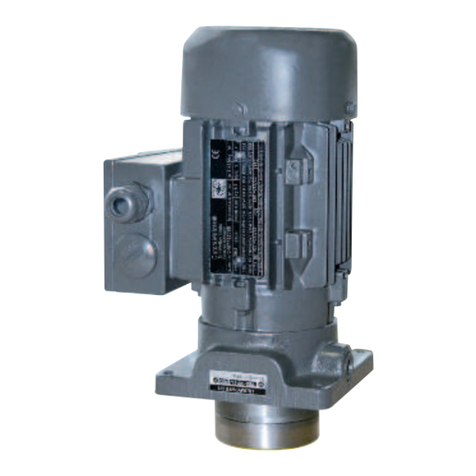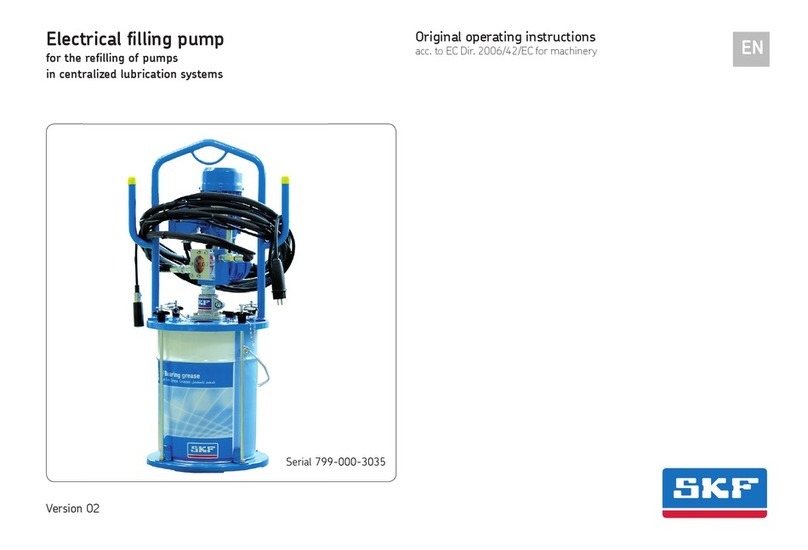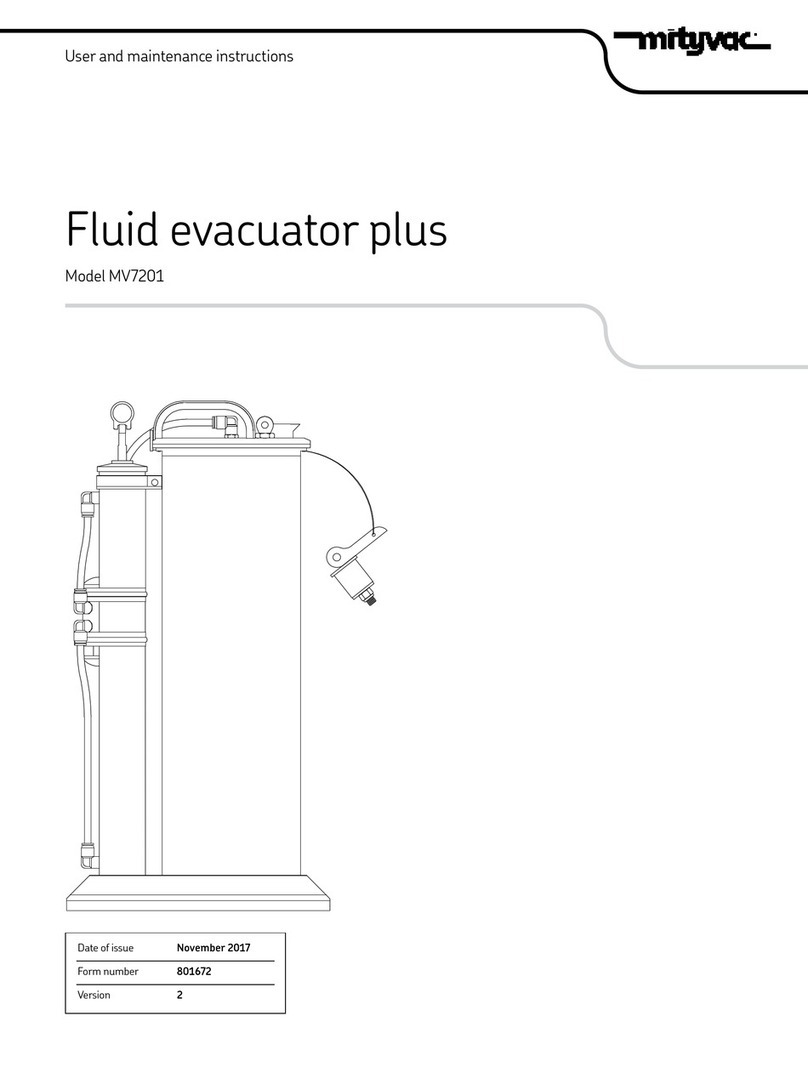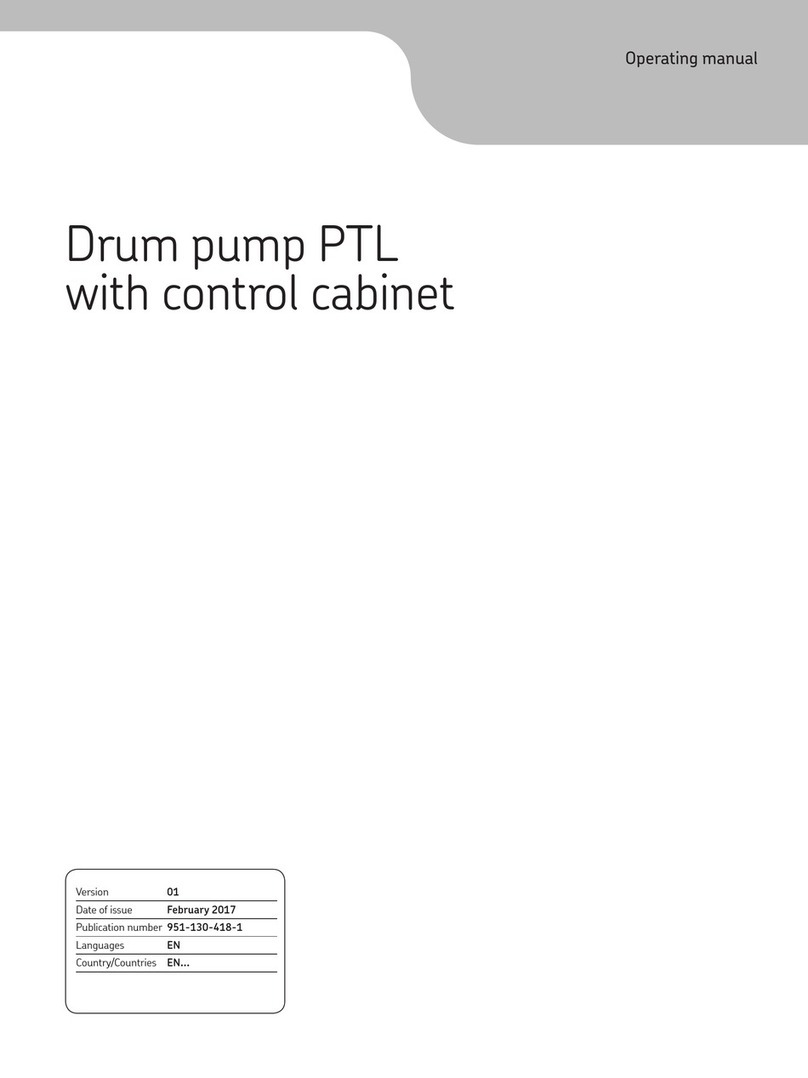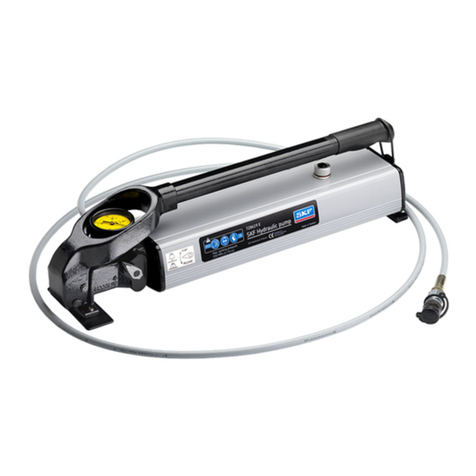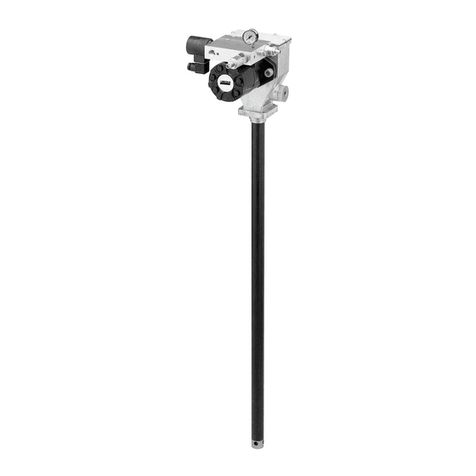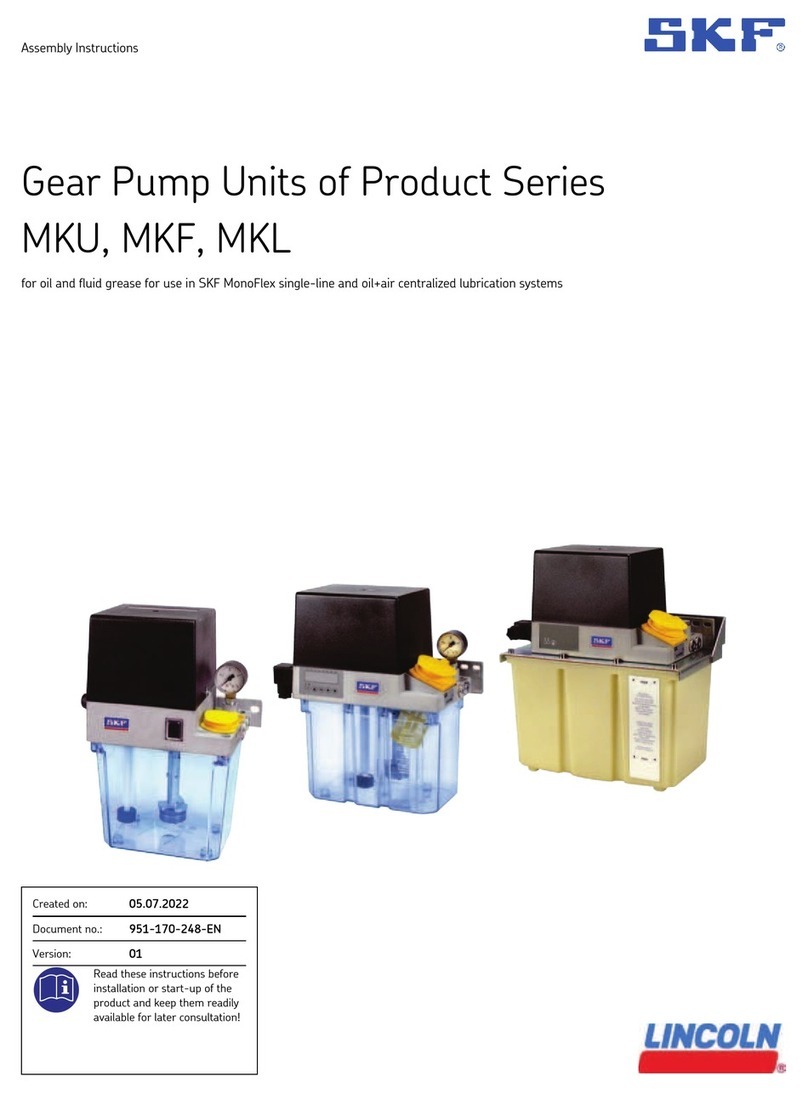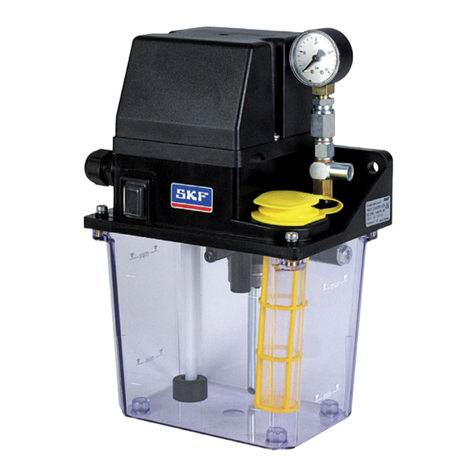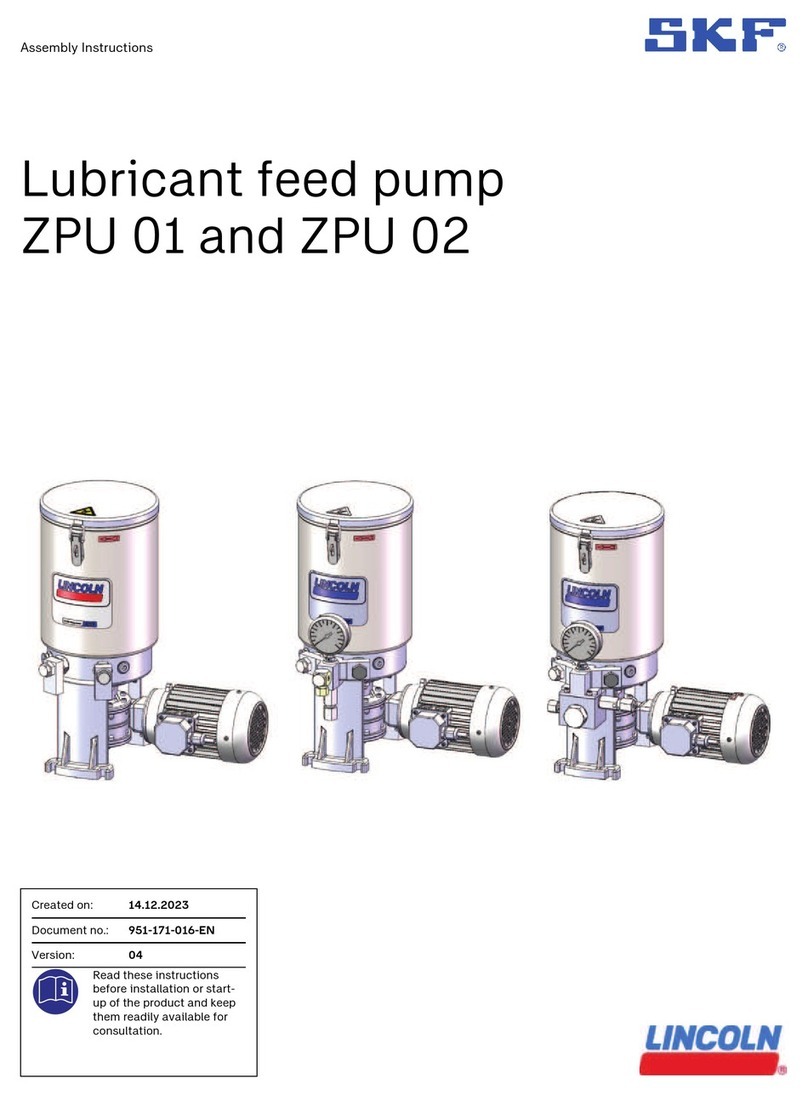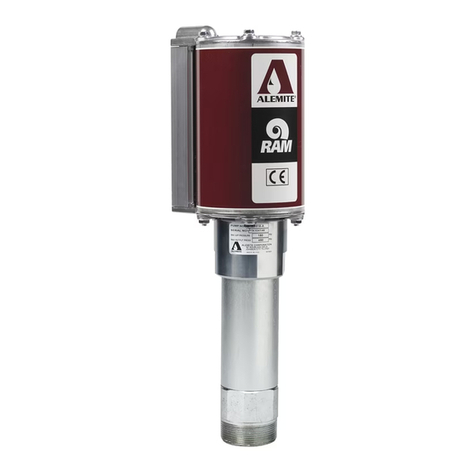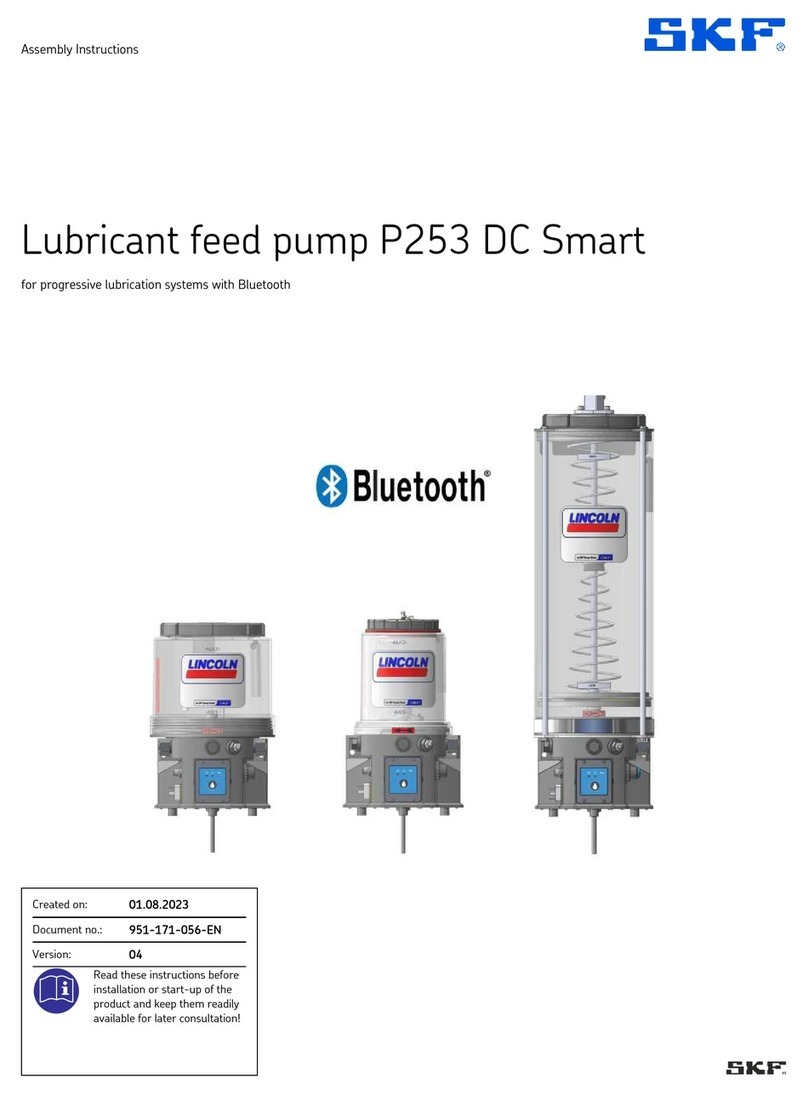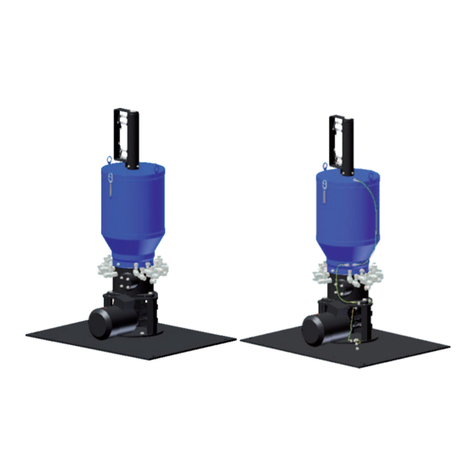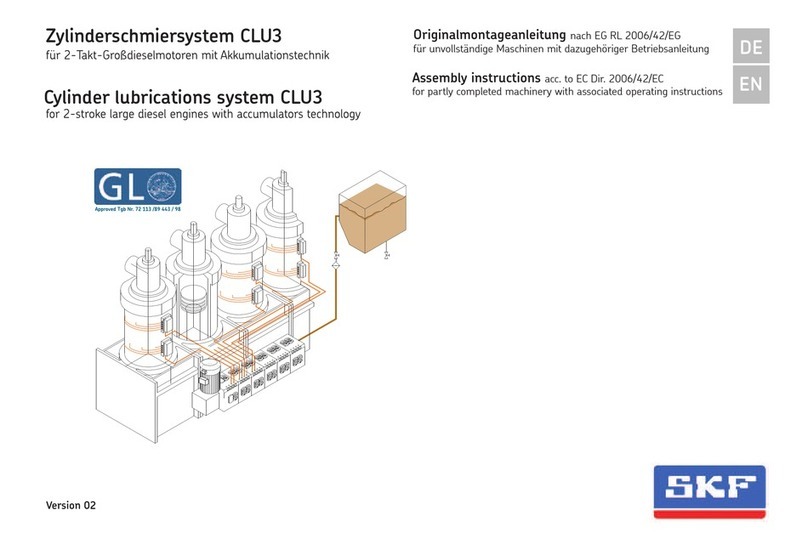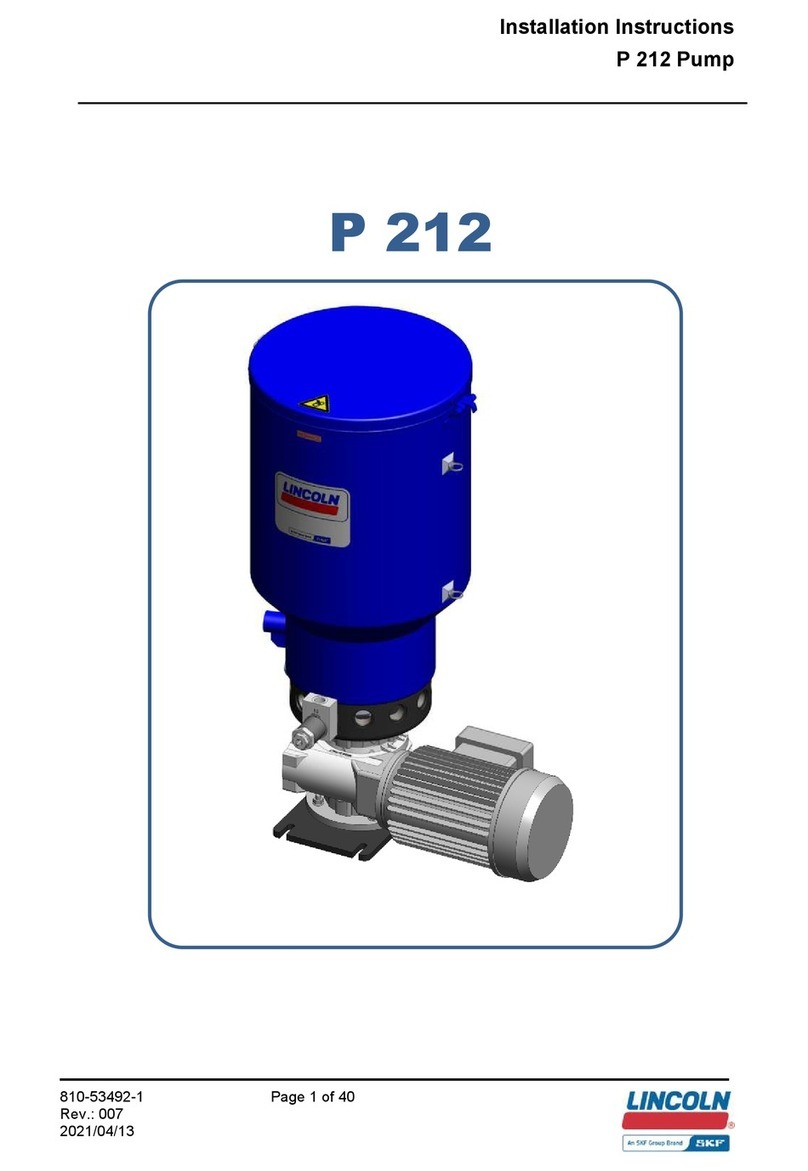
*Indicates change.
Safety*
The assembly must be installed, maintained
and repaired exclusively by persons familiar
with the instructions.
Always disconnect power source
(electricity, air or hydraulic) from the
equipment when it is not being used.
This equipment generates high pressure.
Extreme caution should be used when
operating this equipment as material leaks
from loose or ruptured components can
inject fluid through the skin and into the
body. If any fluid appears to penetrate the
skin, seek attention from a doctor
immediately. Do not treat injury as a simple
cut. Tell attending doctor exactly what type of
fluid was injected.
Any other use not in accordance with
instructions will result in loss of claim for
warranty or liability.
• Do not misuse, over-pressurize, modify
parts, use incompatible chemicals, fluids,
or use worn and/or damaged parts.
• Do not exceed the stated maximum
working pressure of the equipment or of
the lowest rated component in your
system.
• Always read and follow the manufacturer’s
recommendations regarding fluid
compatibility, and the use of protective
clothing and equipment.
• Failure to comply may result in personal
injury and/or damage to equipment.
CAUTION
Do not operate equipment without
wearing personal protective gear.
Wear eye protection. Protective
equipment such as dust mask, non-skid
safety shoes, hard hat, or hearing pro-
tection used for appropriate conditions
will reduce personal injuries.
Failure to comply may result in light
personal injury.
WARNING
Do not allow any body part
to be trapped by equipment.
Body parts can be crushed
by subassemblies during
operation.
Failure to comply may result in death
or serious physical injury.
WARNING
Do not allow fluid to leak
onto floor when operating
equipment. If spill occurs,
clean any fluid on floor before continuing
operation.
Failure to comply may result in death
or serious personal injury.
WARNING
Do not use this equipment to supply,
transport, or store hazardous
substances and mixtures in accordance
with annex I part - of the CLP
regulation (EG /) or HCS
CFR . marked with GHS,
GHS and GHS hazard pictograms
shown:
Explanation of signal words
for safety
NOTE
Emphasizes useful hints and
recommendations as well as
information to prevent property damage
and ensure efficient trouble-free
operation.
CAUTION
Indicates a dangerous situation that can
lead to light personal injury if
precautionary measures are ignored.
WARNING
Indicates a dangerous situation that
could lead to death or serious injury if
precautionary measures are ignored.
DANGER
Indicates a dangerous situation that will
lead to death or serious injury if
precautionary measures are ignored.
WARNING
Do not operate
equipment without
reading and fully
understanding safety
warnings and instructions.
Failure to follow warnings and
instructions may result in serious injury.


